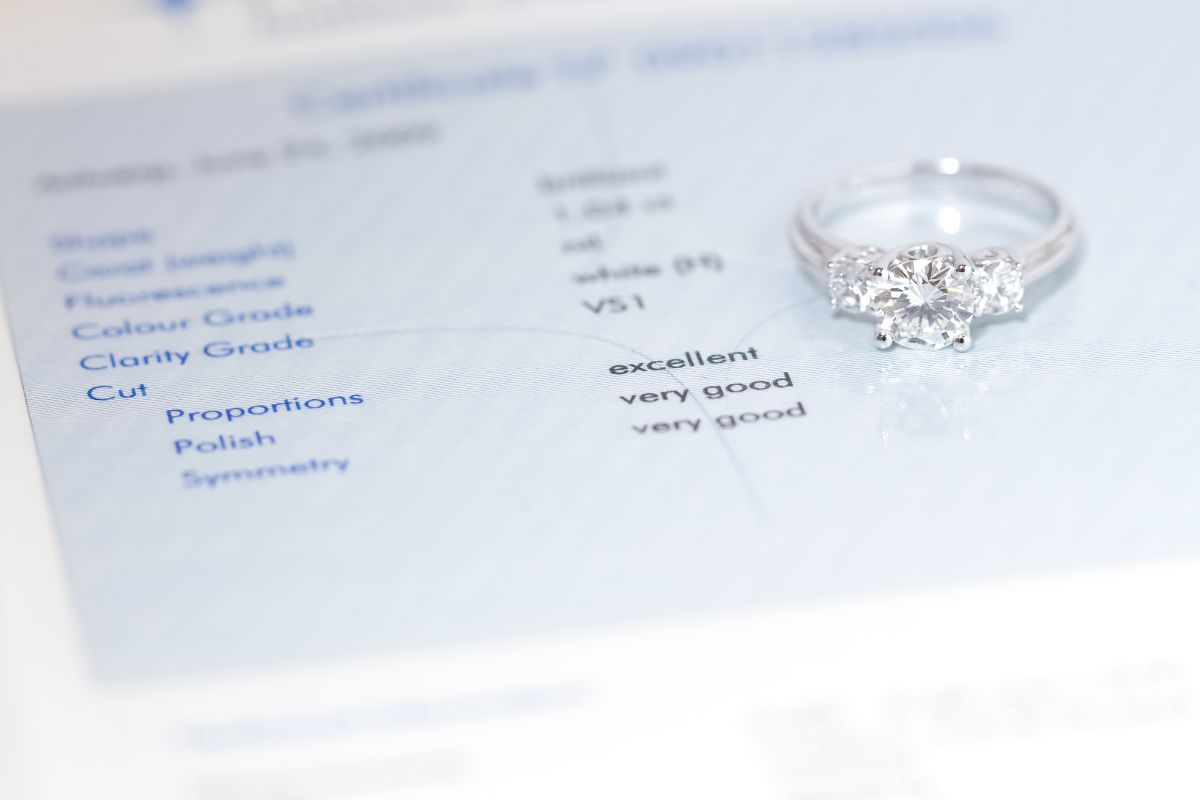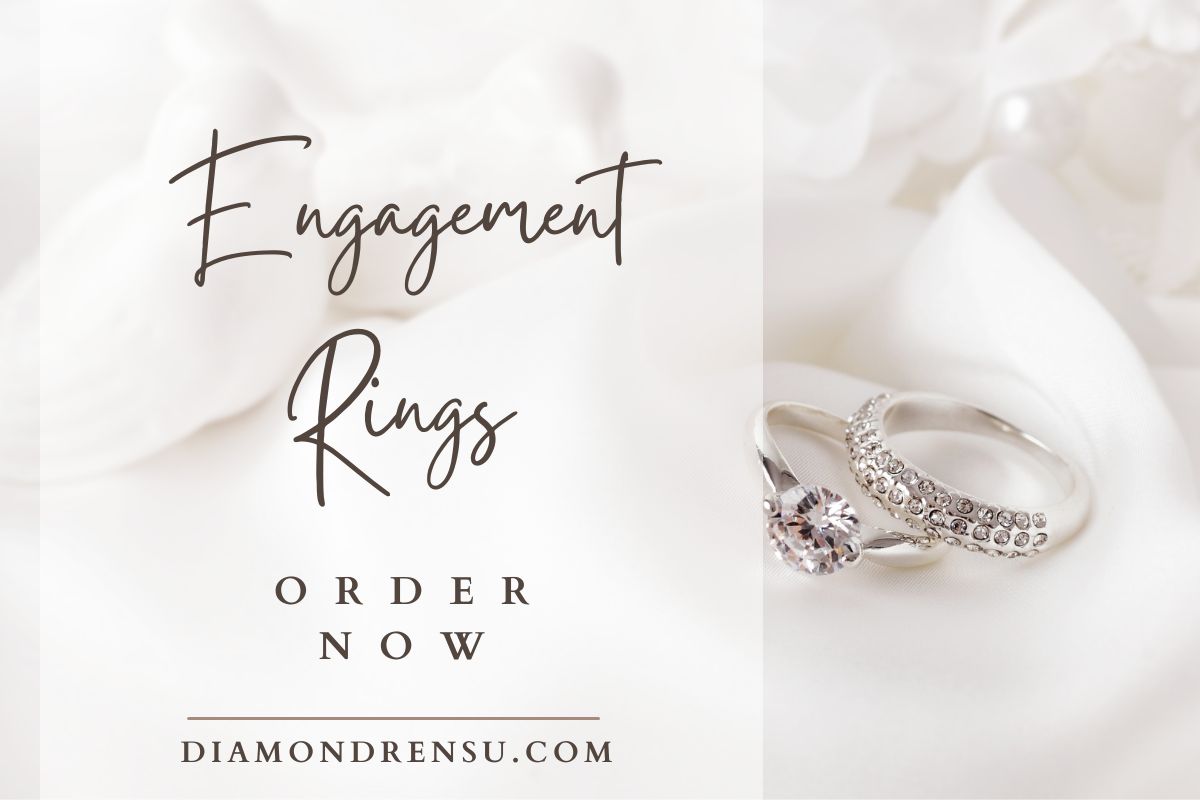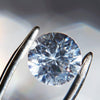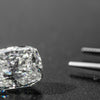
How Much is a 3.5 Carat Diamond: Unveiling the Value
When it comes to the luxurious and captivating world of diamonds, the size and quality are often at the forefront of our conversations. A 3.5 carat diamond strikes a remarkable balance between grandeur and elegance, making it a coveted choice for those seeking a statement piece of jewelry. Understanding its value necessitates a dive into the intricacies of the diamond market, where pricing is influenced by a multitude of factors.
Table Of Contents
- Understanding Carat Weight and Its Impact on Value
- The 4 Cs of Diamonds
- Different Diamond Shapes and Their Appeal
- Certification and Authentication
- The Market and Economic Factors Affecting Diamond Prices
- Natural Diamonds Versus Synthetic Options
- The Role of Diamond Retailers and Online Platforms
- Additional Factors Influencing Overall Diamond Value
- Making Your Purchase with Confidence
- Frequently Asked Questions
We observe that the cost of a 3.5 carat diamond can vary dramatically, with prices ranging from $14,329 to $139,897. This considerable spectrum reflects the impact of the diamond's characteristics on its value. The universally accepted 4Cs—cut, color, clarity, and carat weight—play crucial roles in determining the price. A diamond that excels in these areas, possessing exceptional quality and rarity, commands a higher premium.
Moreover, our insights into the diamond market trends indicate that inventory and average prices can fluctuate over time due to changes in demand and supply. It is essential for buyers to stay informed about these dynamics. The art of choosing the right diamond matches one’s desires and budget, lying in an understanding of these critical aspects that shape the diamond's allure and worth.
Understanding Carat Weight and Its Impact on Value
In the realm of diamonds, carat weight is a crucial factor that significantly determines a stone's value. Our focus is on what this means for 3.5 carat diamonds.
Carat Weight Explained
Carat weight measures the mass of a diamond, where one carat equates to 200 milligrams. It's important to understand that higher carat weight often results in higher prices due to the rarity of larger diamonds. However, value isn't solely dependent on carat weight; other factors such as clarity, color, and cut also play integral roles.
Comparing 3.5 Carat Diamond Prices
When examining 3.5 carat natural diamond prices, we observe a broad price range. This variance stems from the quality gradings each individual diamond possesses. Two 3.5 carat diamonds can differ significantly in price based on these gradings. Below is a simplified table showing possible price ranges for a 3.5 carat diamond, considering it's of a high quality cut, color, and clarity
| Quality | Price Range |
|---|---|
| Excellent | $50,000 - $100,000 |
| Very Good | $40,000 - $80,000 |
| Good | $30,000 - $60,000 |
| Fair | $20,000 - $40,000 |
Please note these figures are estimates and actual prices may vary based on market conditions and other factors such as the diamond's provenance or additional grading characteristics.
The 4 Cs of Diamonds
💎 Carat
Refers to the weight of the diamond.
🔍 Clarity
Refers to the presence of flaws or blemishes within the diamond.
🎨 Color
Refers to the absence of color within the diamond.
✂️ Cut
Refers to the proportions and angles of the diamond.
When we consider the value of a diamond, we focus on what is known as the 4 Cs: Cut, Color, Clarity, and Carat. Each of these attributes plays a critical role in determining the beauty and worth of a diamond.
Significance of Cut
The cut of a diamond is paramount in defining its brilliance and sparkle. A well-executed cut enhances the diamond's ability to reflect and refract light, boosting its luminosity. Cut quality is assessed based on proportions, symmetry, and polish, where precision is key. The ideal proportions ensure that light entering the diamond is reflected back to the eye, maximizing its fire and brilliance.
Influence of Color
A diamond's color, or rather its lack of color, influences its rarity and value. Color grades range from D (colorless) to Z (light yellow or brown tint). Diamonds that are colorless, or near colorless, are of higher value, as they allow more light to pass through and create more sparkle. As we move further down the color scale, diamonds exhibit more color, which can affect their brightness and, consequently, their value.
Clarity and Its Effects
Clarity refers to the absence of imperfections, known as inclusions and blemishes, within and on the surface of a diamond. Clarity choice can range from Flawless (no inclusions visible under 10x magnification) to Included, which has noticeable inclusions that may affect transparency and brilliance. The fewer the imperfections, the rarer and more valuable the diamond becomes. However, slight inclusions can often be concealed or become irrelevant once set within jewelry, depending on their positioning.
Carat Weight Revisited
Carat weight is a measurement of a diamond's weight, with one carat equating to 0.2 grams. While carat weight can be indicative of size, it does not directly measure a diamond's dimensions. A higher carat weight signifies a larger diamond, but when combined with a high-quality cut, color, and clarity, it substantially increases in value. Especially for remarkable sizes such as a 3.5 carat diamond, these factors jointly influence the price and desirability.
Different Diamond Shapes and Their Appeal

-When we consider diamond shapes, two critical aspects always stand out: the visual impact each shape brings and its influence on the diamond's sparkle. Each shape offers a distinct appeal and contributes to the diamond’s character and value.
Variety of Diamond Shapes
Diamonds are crafted into various shapes, each with its unique charm and optical properties. The appeal of a diamond shape often depends on personal preference, but also on how it interacts with light. It's essential to understand the common attributes of popular diamond shapes:
- Round: Unparalleled in brilliance, capturing light effectively.
- Princess: Known for its angular, contemporary form.
- Oval: Offers an elongated look that can make the finger appear longer.
- Marquise: Has a boat-like shape that maximizes carat weight.
- Pear: Resembles a teardrop, blending the marquise and round shapes.
- Cushion: Has soft edges and offers a vintage aesthetic.
- Emerald: Features a step-cut that emphasizes clarity with an open table.
- Asscher: Square shape with deep step cuts and a higher crown.
- Radiant: Combines the lines of the emerald shape with the brilliance of round diamonds.
- Heart: The ultimate symbol of love, requires skilled cutting for proper symmetry.
Choosing the right diamond shape that resonates with one's style and maximizes the diamond's visual appeal is crucial. The length to width ratio plays a significant role here, as it can affect the perceived size and shape of the diamond.
Round Brilliant Cut and Popularity
The round brilliant cut remains the most popular diamond shape due to its ability to reflect light, creating exceptional sparkle. Renowned for its 58 facets that are precisely calculated to maximize brilliance, the round diamond has set the standard for all other shapes:
- Face-up area: Reflects size appearance; a well-proportioned round diamond optimizes this.
- Dimensions: Directly influence the stone's interaction with light.
We observe that the popularity of the round brilliant cut isn't just a matter of trend but also science. Its facet pattern is optimized for performance, enhancing both brightness and fire. When using a diamond price calculator, we notice round brilliants often fetch a higher price per carat compared to other shapes, a testament to their enduring demand. The ideal length-to-width ratio for a classic round brilliant is 1.0, ensuring a balanced and symmetrical appeal.
Certification and Authentication

When purchasing a 3.5 carat diamond, we recommend prioritizing certification and authentication. These not only ensure the quality and authenticity of your diamond but also significantly influence its value.
The Importance of a GIA Certificate
GIA Certificate:
- Full Name: Gemological Institute of America Certificate
- Focus: Evaluates the 4Cs (Carat, Cut, Color, Clarity)
- Renown: Regarded as the Industry Standard
A GIA certificate is paramount because it offers an unbiased assessment of the diamond's characteristics and confirms its authenticity. Bear in mind, a GIA certification can bolster the resale value and buyer confidence, given that it is one of the most trusted certifications in the diamond industry.
Other Recognized Grading Entities
AGS (American Gem Society):
- Specialty: Focus on Cut Grading Precision
- Recognition: Comparable to GIA in terms of reliability
Aside from GIA, the AGS is a reputable grading entity known for its scientifically derived cut grading system. A certificate from AGS or GIA provides assurance that the 3.5 carat diamond has undergone thorough examination by independent experts, which is critical for both the buyer and potential future appraisal processes.
The Market and Economic Factors Affecting Diamond Prices

Our analysis shows that diamond prices are not static and are often influenced by a myriad of market and economic factors. Knowledge of these can be crucial for understanding the cost of a diamond, such as a 3.5 carat stone.
Historical and Current Market Trends
Examining historical diamond market pricing, it's evident there have been significant fluctuations over time. For instance, during the Great Depression, diamond prices plummeted due to low demand. Comparatively, in recent times, the average price of a 3.5 carat diamond was reported to be around $56,142, with potential variation based on specific characteristics.
Current trends suggest an adjustment in pricing. Recent analyses indicate an 18% decrease from peak values, and a 6.5% decline year-to-date. Technological innovations and changing consumer preferences also play a role, potentially leading to shifts away from traditional purchasing patterns.
Global Economics and Diamond Value
Global economic trends, such as inflation and currency fluctuation, directly affect diamond market pricing. These trends can either upsurge the cost of mining and production due to inflation or decrease the buying power of consumers, leading to lessened demand.
Supply chain dynamics also hold a significant influence. Interruptions in the supply chain can result in scarcity, driving prices upward. Conversely, oversupply could lead to a downward pressure on prices. Our aim is to keep abreast of these variables to inform our stakeholders accurately.
Natural Diamonds Versus Synthetic Options
Natural Diamonds 💎
Formed deep within the Earth over millions of years.
Each diamond is unique with its own characteristics.
Mined from various locations around the world.
Traditionally associated with romance and luxury.
Synthetic Options ⚗️
Created in controlled laboratory environments.
Uniform in quality and characteristics.
Produced using advanced technology and processes.
Increasingly popular for ethical and cost reasons.
In our exploration of 3.5 carat diamonds, it's crucial to understand the distinction and market positions between natural and lab grown diamonds. Each has its own set of characteristics that appeal to different buyers.
Dominance of Natural Diamonds
Natural diamonds have long held a dominant position in the market, especially for significant purchases such as engagement rings and fine jewelry. Our data sets indicate that the inventory of 3.5 carat natural diamonds is extensive, offering a range of options in terms of cut, color, clarity, and of course, price. Historically, the rarity and the sentimental value associated with natural diamonds have established their status as the quintessential choice for marking life's milestones.
- Inventory: Abundant selection of natural 3.5 carat diamonds
- Price Range: Approximately $25,000 - $150,000 and beyond
- Rarity & Sentiment: High value placed on natural origin
The Rise of Lab Grown Diamonds
Lab grown or synthetic diamonds have become more prominent in recent years, providing a cost-effective and ethically sourced alternative to natural diamonds. These diamonds are identical in chemical and physical properties to natural diamonds but are created in a controlled laboratory setting. The production of lab grown diamonds has introduced a significant shift in the diamond industry, offering a comparable level of quality and brilliance at a fraction of the cost.
- Physically & Chemically Identical: to their natural counterparts
- Cost-Effectiveness: Lower price points for similar carat and quality
- Ethical Sourcing: Appeals to environmentally and socially conscious consumers
The Role of Diamond Retailers and Online Platforms

When choosing a 3.5 carat diamond, it's crucial to understand the vital roles played by both brick-and-mortar diamond retailers and online platforms. We'll discuss trusted retailers renowned in the industry and the advantages of opting for digital channels when purchasing such a valuable gemstone.
Trusted Retailers in the Industry
In the realm of diamond retailers, reputation and reliability are paramount. Our experience with industry leaders such as Mike Fried of The Diamond Pro underlines the necessity of expertise in guiding buyers through the diamond buying process. Similarly, reputable companies like Blue Nile offer a vast selection of quality diamonds and have established a strong standing among consumers for their customer service and knowledge.
Advantages of Online Diamond Purchasing
Online platforms bring a host of benefits to the diamond buying journey:
- Convenience: Sites like James Allen allow us to view extensive collections of diamonds from the comfort of our homes.
- Education and Transparency: These platforms often provide detailed education about diamonds, ensuring we make informed decisions.
- Pricing: Without the overhead costs of physical stores, online sellers can offer competitive prices.
By leveraging these online resources, we can effectively navigate the intricacies of purchasing a sizeable 3.5 carat diamond while enjoying potentially lower prices and comprehensive customer support.
Additional Factors Influencing Overall Diamond Value

When considering the purchase of a 3.5 carat diamond, we must take into account more than just the four C's. Factors such as fluorescence and the type of setting play critical roles in determining the overall value and appearance of the stone.
Impact of Diamond Fluorescence
- Level of Fluorescence: Diamonds can exhibit varying levels of fluorescence when exposed to ultraviolet (UV) light. This fluorescence can range from None to Very Strong.
- Effect on Value: While a Strong or Very Strong fluorescence can lower the value of a diamond due to perceptive issues of haziness or milkiness, a medium to faint fluorescence might increase its appeal by providing an enhanced whiteness under certain lighting.
- Interaction with Color: Fluorescence can sometimes complement lower color grade diamonds (I-J) by offsetting a yellowish tint, thereby improving the stone's color appearance.
Effect of Setting on Appearance and Price
-
Solitaire Setting:
- Emphasizes the diamond, often making it appear larger and more brilliant.
- Typically increases the sparkle and perceived clarity of the stone.
- Can impact the price depending on the choice of metal and design intricacy.
-
Halo Setting:
- Involves a center stone surrounded by a collection of smaller diamonds.
- Enhances the overall sparkle and makes the central diamond seem more significant.
- The additional diamonds in the halo and potential complexities in design commonly raise the price over a solitaire setting.
Both the setting and striking a balance in fluorescence can significantly influence a diamond’s visual impact, particularly in engagement rings, where the interplay of light and design is vital for aesthetic value.
Making Your Purchase with Confidence

When selecting a 3.5 carat diamond, it's crucial to examine its specific features and understand the purchasing process to ensure a confident acquisition.
Evaluating Diamond Features
Carat Weight:A 3.5 carat diamond will significantly impact the statement your engagement ring makes. It's important to note that carat refers to weight, not size.
Cut:The cut of a diamond affects its brilliance. A well-cut diamond reflects light beautifully, making it more sparkly.
Color and Clarity:
- Color: Ranges from D (colorless) to Z (light yellow). A diamond closer to D will be rarer and more valuable.
- Clarity: Describes the absence of inclusions and blemishes. Flawless diamonds are incredibly rare.
Certification:Always ensure the diamond is GIA certified, confirming its quality.
Final Considerations Before Buying
Craftsmanship and Setting:The engagement ring's setting should secure the diamond well and complement its size and shape.
History:Remember, a diamond starts as a lowly form of graphite deep under the earth’s surface. Through immense pressure and temperature, carbon atoms are transformed into the crystal structure we see today.
Care and Maintenance:Discuss with the jeweler about the cleaning and polishing requirements to maintain the diamond's luster over time.
By analyzing these details meticulously, we can assure ourselves and our significant other that the investment in a 3.5 carat diamond engagement ring is made with confidence.
Frequently Asked Questions
In this section, we address common inquiries related to the cost of 3.5 carat diamond rings, including factors influencing their value and comparisons with slightly smaller sizes.
What is the value range for a 3.5 carat diamond ring?
The value of a 3.5 carat diamond ring can fluctuate widely, from approximately $26,000 to $150,000. Factors such as cut, clarity, color, and the diamond's certification impact this price range, with the median price being around $52,900.
Are lab-grown diamonds less expensive than natural diamonds of similar size?
Yes, lab-grown diamonds typically cost less than their natural counterparts. For a diamond of the same size and quality, one that's lab-grown may be up to 30% cheaper.
Does the brand of a 3.5 carat diamond ring affect its price significantly?
Absolutely. The brand of a diamond ring can greatly influence its price. A 3.5 carat diamond from a luxury or well-known brand can command a premium over lesser-known or generic brands.
What is the visual difference between a 3.5 carat diamond and a slightly smaller carat size?
A 3.5 carat diamond will generally appear more notable and have a larger presence on the finger compared to a smaller carat size, such as a 3 carat diamond. However, the actual visual difference depends on the cut and setting of the diamond.
What factors contribute to the resale value of a 3.5 carat diamond?
The resale value of a 3.5 carat diamond is influenced by its condition, market demand, rarity, and the 4Cs—cut, color, clarity, and carat weight. Provenance and brand can also play a role.
How does diamond shape impact the price of a 3.5 carat diamond?
The shape of a diamond affects its price, with round brilliant cuts typically being the most expensive due to their popularity and sparkle. Other shapes, like marquise or pear, may cost less while offering a larger surface area for the same carat weight.
Checkout some of our top collections:
Leave a comment
Please note, comments must be approved before they are published.









